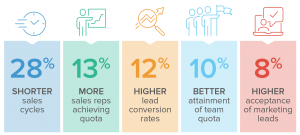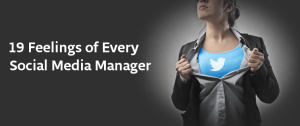The proliferation of bad content on the internet has led marketers to disown many old SEO tactics quicker than you can say ‘grey hat.’ Some bold marketers are even predicting the eventual demise of SEO.
I have a small message for the naysayers – the sky is not falling anytime soon! We can safely envision a peachy, spam-free future of SEO with great content everywhere. Though it will take the time to reach there, we will get there owing to some concrete steps taken by search engine gods and due to, quite an extent, content overload.
The truth is SEO keeps adapting itself to changes in time, technology, and taste (content consumption habits) and thus its dynamics keep looking different year after year. What was true in 2013 or 2015 won’t be happening in 2017 because so many things changed on the internet. Let’s see some positive changes that are going to make SEO better in 2017:
Increased Content Variety
Remember the days of 500-word blog posts and articles? In the early days, SEO content revolved around blog posts, how-to articles, and listicles. Then someone said something about visuals being equal to 1000 words, and suddenly the internet was flooded with infographics, charts, memes, and presentations. Then came the video era, followed by 3D, animation, and interactive age and now we see incredible content pieces which are a blend of art and technology.

The BLAH campaign by Virgin America with the longest (5 hours 45 minute) video pre-roll, a fake website, and a fake airlines business, complete with a toll-free number and fax is an example of how brands are experimenting with content. The campaign became a hit, with Virgin America and BLAH brand mentions increasing by 621%. The campaign was praised across national outlets such as CBS, NBC, ABC, and FOX, generating 138 million media impressions. It even won the Shorty Award among many other awards.
Interactive content is ideal for storytelling and publicity. Many brands are switching to interactive content from video content as it allows users to engage with the brand more efficiently. From an SEO point of view, interactive content is better than videos because they load faster; speed being a crucial ranking factor.
What’s more, experimental content has a greater chance of viral success, which is why it shows remarkable results for long tail keywords. The best part is branding don’t need to stick to the written word as search engines have become cleverer at understanding the context of content, no matter which form it is in.
Recent updates by Google have necessitated that content is optimized to answer search queries and not just contain empty keywords. Keywords are important, no doubt, but if you promise the word in your headlines and meta descriptions and then fail to deliver, Google will not forgive you. Optimize to provide not only a great user experience but also great content that provides value to the user.
The future of SEO looks more interactive, animated, and experimental, with brand-human engagement rising to new heights in 2017!
Mobile-Optimized Sites
In the one year since AMP has been launched, 600 million AMP documents were created by sites such as eBay, Reddit, Shopify, Konga, WikiHow, and Skyscanner. Tens of millions of WordPress sites now have AMP pages, with page load speed up to 89% faster.
Publishers like The Washington Post saw a 23 percent uplift in mobile search users whereas publishers like The Daily Dot, Hearst Television, and The Miami Herald say mobile users who start with an AMP article spend 10% more time than those who land on regular mobile pages.
For one publisher, the CTR was 600% greater after the implementation of AMP. All these findings were published in a post by David Besbris, VP of Google Search, AMP Project Lead at Google.

Load speed and mobile friendliness of a site are two high-quality ranking factors, and AMP coaxed our favorite publishers to work in that direction. Google is also favoring those with accelerated pages over those without. Heartened by this yearly progress and Google’s stance, we can predict that we will see faster, mobile-optimized sites, come 2017.
Real-time Results for Campaigns
If your SEO game is clean and top-notch, the latest Penguin update shouldn’t affect you, but if you are using the old spray and pray approach to link building, you better brush up your act. With this update, you can see immediate results of your new link-building campaign as your traffic will increase or plummet in real-time.
If you don’t want your link-building campaigns to suffer, here’s a three-pronged approach to a smooth search engine journey:
- Invest in a reliable SEO tool that allows you to monitor your backlink profile regularly and disavow unnatural links as they appear.
- Understand negative SEO as you might be a victim of unnatural and negative SEO which can hurt your ranking.
- Get everyone from your sales team to your marketing team working closely with your SEO team to create more contextual link-building campaigns.
Let’s understand how your SEO team can benefit from working closely with other teams. Your advertising team creates a great branding campaign. Your marketing team can use a project management and collaboration tool (we use WorkZone) to make all the documents related to this campaign available to all the teams. The campaign manager creates a task like getting PR mentions in all the important papers and publications and routes them to your SEO team. The SEO team then lists all the reputed publications and reaches out to them for coverage. You get enlisted in all leading papers with zero spam and your rankings skyrocket!

Optimizing for Voice Search
When Siri was introduced to the world, the entire experience of talking to your personal assistant and getting queries answered was delightful. Then Windows introduced Cortana and Google Now came up on Android phones. These bots are naturally powered by search engines – Cortana by Bing, Google Now by Google and Siri (now in iOS 7) by Bing.

The growth of mobile and the announcement by Microsoft that Cortana will be on the desktop of Windows 10 means that voice search is set to grow very quickly. You need to understand how searches originate on a regular search engine and while querying using a voice bot. Although marketers still have little information on how to optimize for voice search, there are a few clues that you can work with.
Searches on voice, for instance, have longer search terms. These are often in the form of a question. When you are searching on Google, for example, you’d simply type “Starbucks, ” and you’ll get the addresses of all Starbucks outlets around you. But in a voice search, you’ll ask something like, “Where is the nearest Starbucks?”
Try to put yourself in the shoes of the customer and how they would start a voice search, and you’ll find a lot of ideas as to how voice searches originate and what you can do to enhance your brand’s visibility with voice searches.
Social Media as Search Engine
Social signals definitely affect rankings, although this relationship might seem indirect to the casual observer. But the use of social media platforms as search engines is on the rise. Google has also started experimenting with putting search results from Twitter and Pinterest in some searches. This trend is likely to continue, leading to an increase in the importance of social content creation and profile optimization.
A typical traffic generation graph would tell you that close to 90% of search engine traffic comes from Google and when we talk about SEO, it is Google optimization. But social media searches are necessary, although they do not register in any analytics platform for the simple reason that social searches happen on the company’s social pages and not the website, which will have analytics tracking.
Take the case of YouTube. It is the second largest search engine in the world with around 1140 searches happening on it per second. Even Facebook has an advanced search engine that does specific searches based on the information a user provides like a name, Hometown, Current City, High School, Mutual Friends and so on. Twitter’s search engine manages close to 1.5 billion searches a day. The saying“social is the new SEO” is more evident on Google+ than any other platform. The fact that Google Authorship is closely linked with social via the social network of Google+ is evidence enough not to neglect social media from your SEO plans.
In the year 2017, it is advisable to remain active on your social networks and to enhance them to stay relevant in the SEO game.
Parting Thoughts
Apart from all the above changes, the quality of content will also improve in 2017 as reputed publications won’t accept bad content. If your link-building strategy is akin to getting ten blog links to websites with a Domain Authority (DA) of 30+ every month, only God can help you in 2017. Content overload has forced publishers to eschew mediocrity, so the quantity of content will matter more than quality in the coming year.
Digital & Social Articles on Business 2 Community(57)







